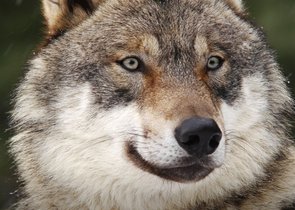The Journal is published by the Nature Conservation Agency of the Czech Republic in cooperation with the Cave Administration of the Czech Republic, the Krkonoše Mts. National Park Administration, the Bohemian Forest Mts. National Park Administration, the Podyjí National Park Administration and the The Bohemian Switzerland National Park Administration. It has been published since 1946.
cs / en
Nature Conservation 3/2014 — 24. 8. 2014 — Focusing on the Public — Print article in pdf
Bartošová D. & Kutal M.: A Difficult Comeback of Grey Wolves to the Czech Republic

The Grey wolf (Canis lupus), similarly to the other Central European large carnivores (i.e., the Brown Bear Ursus arctosand the Eurasian lynx Lynx lynx) had been severely persecuted in Bohemia and Moravia for centuries.
Thus, the mammalian predator became extinct there. Its last refuge included remote mountains in north-eastern Moravia not so heavily influenced by humans where the last individual was killed in 1914. Due to large carnivore stricter protection across Europe, after lynxes and brown bears also wolves begun to re-colonise some parts of their former distribution range. Therefore, since the mid-1990s, wolves have been regularly occurring, although still rarely, in the Moravskoslezské Beskydy/Moravian-Silesian Beskids Mts. The revival of the Grey wolf to the Czech Republic has been quite difficult despite the fact that large carnivores are an irreplaceable part of nature, functioning as keystone species. In early April 2014, a wolf was shot by a camera trap in the Břehyně-Pecopala National Nature Reserve in the former Ralsko Military Training Area (northern Bohemia), now being a part of the Kokořínsko-Máchův kraj/Mácha´s Country Protected Landscape Area. It is supposed that wolves inhabited the area less populated by humans from Germany, namely from the Lausitz/Lusatia region of Saxony where some packs of the carnivore occur and successfully reproduce. The authors give evidences that the large carnivores cause minimal economic losses on livestock. In addition, the losses are compensated by the Government. The article also presents a review of the Grey wolf´s conservation status and measures taken for its protection in neighbouring countries as well as an outline of the measures to be implemented to effectively protect livestock against large carnivores, e.g.permanently presence of guard dogs, permanent or mobile fencing or fladry installation or use of alarm and scare devices.

